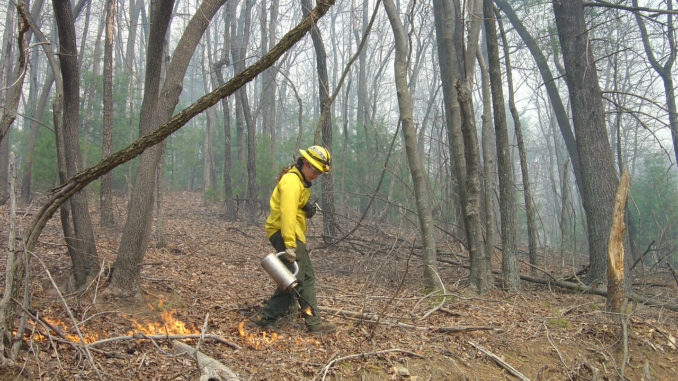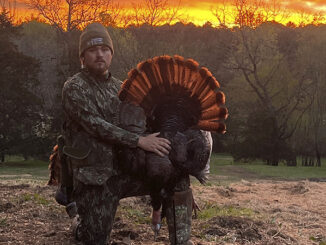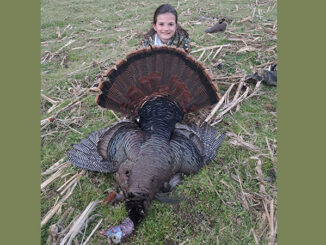
Officials hope to burn 500 acres in Burke, Rutherford counties
Assisted by a N.C. Forest Service youth program, the N.C. Wildlife Resources Commission and the N.C. Division of Parks and Recreation will conduct a prescribed burn on 500 acres in Burke and Rutherford counties on Thursday if the weather is appropriate.
The prescribed burn, approximately half on South Mountains State Park and half on South Mountains Game Land, will aid in ecosystem restoration of the land, wildlife habitat improvement, and reduce brush and debris that can cause dangerous wildfires. Although the carefully planned and maintained fire will occur during the open hunting season, the only closure of game land access will be on the CCC Road along the northern boundary with the state park, and this closure will only be for the day of the burn.
“We will do everything we can to reduce the amount of smoke to nearby residents and neighborhoods,” said Dean Simon, a forester with the Commission. “However, people will see smoke while we are conducting this prescribed burn, and we want to make sure they don’t confuse this prescribed burn with the Linville Gorge fire on the other side of the county.
“Prescribed fire, though, is one of our essential, key tools in wildlife management, and many of our species and habitats need it not only to survive, but thrive.”
This tract was burned once before, in 2009. A system of regular prescribed burns is advantageous to the habitat of early successional wildlife that live in the region, such as quail, rabbits, songbirds, and many other species also benefit, including turkey and deer. Controlled burns also benefit many plant species, including rare plants such as white irisette and bear oak.
Fire once occurred naturally across North Carolina. Low-intensity fires burned every few years, fueled by grass, leaves, pine straw and other forest debris. They kept the forest open, allowing sunlight to penetrate to its floor and reducing buildup of dangerous fuel loads. Fire suppression altered the landscape, allowing fuels to accumulate and putting people and communities in jeopardy.
Commission and state parks system staff prepare for each fire by creating a burn plan that includes smoke-management strategies, fire-control measures, acceptable weather parameters, and equipment and personnel needs. The plan also details how the ecosystem will benefit from fire. During and after the burn, staff and equipment, including emergency water tanks, will be on hand to monitor the landscape.
Commission and parks staff will be assisted by personnel from the N.C. Forest Service’s BRIDGE program. This program is a cooperative effort between the N.C. Forest Service and the N.C. Division of Prisons to increase the state’s firefighting capabilities, while providing youth offenders valuable job training and life skills resulting in productive taxpaying citizens upon release and a significant recidivism rate reduction. The participants routinely assist with prescribed fire, in addition to firefighting duties.




Be the first to comment